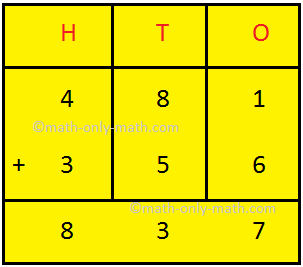Subscribe to our YouTube channel for the latest videos, updates, and tips.
Home | About Us | Contact Us | Privacy | Math Blog
Representation of Data
Collection A (shown below) represents the marks obtained by 50 students in a test of 100 marks.
Collection A
80, 70, 0, 20, 20, 45, 50, 65, 30, 50, 70, 20, 4, 90, 49, 40, 45, 30, 30, 50, 20, 80, 39, 30, 50, 50, 70, 70, 20, 40, 90, 30, 40, 50, 65, 45, 70, 79, 20, 4, 30, 50, 20, 45, 50, 45, 90, 30, 4, 50
In the collection above, 80, 70, etc., are called the terms of the collection.
Depending on the form of expression, data may be raw (i.e., ungrouped) or arrayed.
I. Raw Data: The data in Collection A have been expressed as they were collected. Such data are called raw data.
But with data in raw form, computation, analysis and interpretation become difficult. Therefore, it is necessary to arrange raw data in a systematic order.
II. Arrayed Data: Data arranged in ascending or descending order are called arrayed data. The arrayed form (in ascending order) of raw data in collection A can be expressed as shown ahead.
4, 4, 4, 20, 20, 20, 20, 20, 20, 20, 30, 30, 30, 30, 30, 30, 30, 39, 40, 40, 40, 45, 45, 45, 45, 45, 49, 50, 50, 50, 50, 50, 50, 50, 50, 50, 65, 65, 70, 70, 70, 70, 70, 79, 80, 80, 90, 90, 90, 90.
Table A
|
Marks Obtained 4 20 30 39 40 45 49 50 65 70 79 80 90 Total |
Number of Students 3 7 7 1 3 5 1 9 2 5 1 2 4 50 |
Such a table helps us answer a number of questions about the performance of the students in the test. For example:
(i) What were the lowest and the height marks obtained in the test?
Answer: The lowest mark = 4 and the highest mark = 90.
(ii) How many students of obtained the highest mark in the test?
Answer: 4 students.
(iii) How many students obtained 65 marks in the test?
Answer: 2 students
(iv) What was the mark secured by the largest number of students in the test?
Answer: 50 mark.
III. Grouped Data: The data displayed in table A can be arranged in a shorter form by grouping the whole collection as shown below
Table B
|
Marks Obtained From 0 to under 20 From 20 to under 40 From 40 to under 60 From 60 to under 80 From 80 to under 100 |
Number of Students 3 15 (i.e., 7 + 7 + 1) 18 (i.e., 3 + 5 + 1 + 9) 8 (i.e., 2 + 1) 6 (i.e., 2 + 4) |
Total number of students = 50
Table B can answer a number of questions about the
performance of the students in the test immediately.
For example:
(i) How many students secured below 20 marks in the test?
Answer: 3 students.
(ii) How many students secured 20 or above marks but below 40 marks in the test?
Answer: 15 students.
(iii) How many students secured below 40 marks in the test?
Answer: 3 + 15 = 18 students.
From Representation of Data to HOME PAGE
Didn't find what you were looking for? Or want to know more information about Math Only Math. Use this Google Search to find what you need.
Recent Articles
-
5th Grade Circle Worksheet | Free Worksheet with Answer |Practice Math
Jul 11, 25 02:14 PM
In 5th Grade Circle Worksheet you will get different types of questions on parts of a circle, relation between radius and diameter, interior of a circle, exterior of a circle and construction of circl… -
Construction of a Circle | Working Rules | Step-by-step Explanation |
Jul 09, 25 01:29 AM
Construction of a Circle when the length of its Radius is given. Working Rules | Step I: Open the compass such that its pointer be put on initial point (i.e. O) of ruler / scale and the pencil-end be… -
Combination of Addition and Subtraction | Mixed Addition & Subtraction
Jul 08, 25 02:32 PM
We will discuss here about the combination of addition and subtraction. The rules which can be used to solve the sums involving addition (+) and subtraction (-) together are: I: First add -
Addition & Subtraction Together |Combination of addition & subtraction
Jul 08, 25 02:23 PM
We will solve the different types of problems involving addition and subtraction together. To show the problem involving both addition and subtraction, we first group all the numbers with ‘+’ and… -
5th Grade Circle | Radius, Interior and Exterior of a Circle|Worksheet
Jul 08, 25 09:55 AM
A circle is the set of all those point in a plane whose distance from a fixed point remains constant. The fixed point is called the centre of the circle and the constant distance is known






New! Comments
Have your say about what you just read! Leave me a comment in the box below. Ask a Question or Answer a Question.